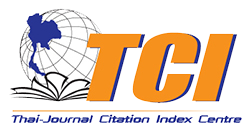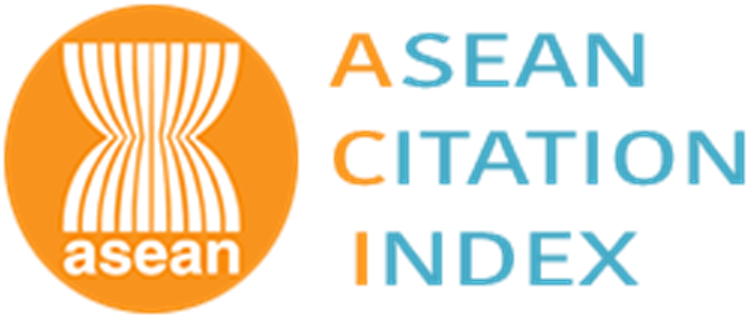การปรับปรุงผังโรงงานโดยใช้การประยุกต์หลักการ CRAFT กรณีศึกษา โรงงานประกอบเครื่องปรับอากาศ
Improving Plant Layout Using CRAFT: A Case Study of An Air Conditioning Assembly Plant
Abstract
การวางผังโรงงานมีความสำคัญต่อประสิทธิภาพการผลิต และลดต้นทุนการดำเนินงาน ถึงแม้ว่าวิธีวางผังโรงงานอย่างเป็นระบบ หรือ SLP จะถูกเลือกใช้ในการวางผังโรงงานอย่างแพร่หลายโดยใช้การวิเคราะห์การไหล และความสัมพันธ์ระหว่างหน่วยงาน ซึ่งเป็นการวิเคราะห์เชิงคุณภาพต้องอาศัยความเชี่ยวชาญของผู้ออกแบบเป็นหลัก ขณะที่การวางผังโรงงานด้วยคอมพิวเตอร์ CRAFT เหมาะกับการปรับปรุงผังโรงงานเดิมหรือการรีเลย์เอาท์ เป็นการวิเคราะห์เชิงปริมาณ ใช้ความหนาแน่นการไหลของวัสดุระหว่างหน่วยงานเป็นตัวกำหนดระดับความสัมพันธ์ของหน่วยงาน นำโปรแกรมคอมพิวเตอร์เข้ามาช่วยประมวลผล โดยการสลับตำแหน่งหน่วยงานทีละคู่เพื่อนำมาคำนวณหาต้นทุนการขนย้ายวัสดุรวมในการเลือกผังโรงงานที่เหมาะสมสำหรับปรับปรุงผังโรงงานกรณีศึกษาเนื่องจากการปรับยุบหน่วยงานลง ทำให้ต้องมีการรีเลย์เอาท์ผังก่อนปรับปรุงของโรงงาน กรณีศึกษามีต้นทุนการขนย้ายวัสดุระหว่างแผนกงานอยู่ที่ 1,252,103.50 บาท ก่อนปรับปรุงผังโรงงานมีต้นทุนการขนย้ายวัสดุระหว่างแผนกงานอยู่ที่ 1,252,103.50 บาท สำหรับการปรับปรุงผังด้วยวิธี CRAFT ดำเนินการสลับตำแหน่งหน่วยงานทั้งหมด 4 ครั้ง โดยเลือกผลลัพธ์ของผังโรงงานที่มีต้นทุนการขนย้ายวัสดุรวมที่ต่ำที่สุด 1,094,018.50 บาท เท่านั้น สามารถลดต้นทุนในการขนย้ายรวม 158,085.00 บาทต่อปี และในการนำผังโรงงานไปใช้ในระบบจริงพบว่ามีพื้นที่ว่างเพิ่มขึ้นในผังใหม่ 1,396 ตารางเมตร
An effective plant layout improvement is critical to achieve high levels of production efficiency and minimizing operational costs. Systematic Layout Planning (SLP) is widely applied due to its structured approach. SLP emphasizes the analysis of material flow and interdepartmental relationships. This approach focuses on qualitative data analysis that relies significantly on the expertise and judgment of the layout designer. Meanwhile, the CRAFT (Computerized Relative Allocation of Facilities Technique) method focuses on quantitative data analysis and is particularly well-suited for improving existing layouts or performing re-layouts. This technique utilizes the density of material flow among departments to determine the levels of interdepartmental relationships. Using computer algorithms, CRAFT systematically evaluates layout alternatives by iteratively exchanging department positions in pairs and calculating the total material handling cost. The layout configuration that yields the lowest total cost is identified as the optimal solution. In the case study, a re-layout was necessitated by the consolidation of departments within a manufacturing facility. Prior to the reconfiguration, the total annual material handling cost between departments amounted to 1,252,103.50 THB. By applying the CRAFT method, a total of four departmental position swaps were carried out. The layout alternative with the minimum total material handling cost, calculated at 1,094,018.50 THB, was selected. This resulted in a total material handling cost reduction of 158,085.00 THB per year. Additionally, the implementation of the new layout led to a significant improvement in space utilization, with an increase of 1,396 square meters of available floor area, thereby enhancing the flexibility and operational efficiency of the facility.
Keywords
[1] S. Payakthong, S. Maithomklang, N. Paenoi, “Development of real-time monitoring and control system for chiller using internet of things technology,” PSRU Journal of Industrial Technology and Engineering, vol. 5, no. 1, pp. 11–29, 2023 (in Thai).
[2] G. Kovacs, “Combination of lean value-oriented conception and facility layout design for even more significant efficiency improvement andcost reduction,” International Journal of Production Research, vol. 58, no. 10, 2020.
[3] B. Mebrat, L. Assefa, T. Gezehagan, G. Achamu, and K. Balasundaram, “Redesign the plant layout for efficiency improvement and cost reduction: A case study,” International Journal of Advances in Scientific Research and Engineering, vol. 6, no. 11, 2020.
[4] L. N. Pattanaik and B. P. Sharma, “Implementing lean manufacturing with cellular layout: A case study,” International Journal of Advance Manufacturing Technology, vol. 42, 2009.
[5] B. Buranapanitki, “An improvement of maintenace facility layout in oilfield service company: A case study,” Thesis of Logistics and Supply Chain Engineering, Prince of Songkla University, 2015 (in Thai).
[6] N. Pawaree, “Production improvement in Din-Kor tiles process: A case study of world heritage town Luang Prabang,” The Journal of Industrial Technology, vol. 11, no. 1, 2015 (in Thai).
[7] S. B. Naik and S. Kallurkar, “A Literature review on efficient plant layout design,” International Journal of Industrial Engineering Research and Development, vol. 7, no. 2, 2016.
[8] D. K. Biswal, K. Muduli, and J. N. Biswal, “Plant layout improvement using CRAFT: A case of food packaging unit,” Recent Trends in Product Design and Intelligent Manufacturing System. Lecture Notes in Mechanical Engineering. Springer, Singapore, 2023.
[9] V. Deshpande, N. D. Patil, V. Baviskar, and J. Gandhi, “Plant layout optimization using CRAFT and ALDEP methodology,” Productivity Journal by National Productivity Council, vol. 57, no. 1, 2016.
[10] J. Kunyuan, “The development of how to set plant layout using CRAFT method with VBA on microsoft excel,” M.S. thesis, Department of Engineering in Industrial Systems and Environmental Engineering, Suranaree University of Technology, 2018 (in Thai).
[11] N. H. Prasad, G. Rajyalakshmi, and A. S. Reddy, “A typical manufacturing plant layout design using CRAFT algorithm,” Procedia Engineering, vol. 97, 2014.
[12] B. Buranapanitkij, “An improvement of maintenance facility layout in oilfield service company: A case study,” M.S. thesis, Department of Engineering in Logistics and Supply Chain Engineering, 2015 (in Thai).
[13] P. Yadav and S. Sharma, “A case study of plant layout: To compare production efficiency of manual plant layout and computerized plant layout using ARENA software,” International Journal of Engineering Research and General Science, vol. 4, no. 4, Jul.–Aug. 2016.
[14] A. H. Nurudeen, I. M. Dagwa, I. B. Ugheoke, and I. D. Muhammad, “Facility layout design, simulation, and optimization for Kaolin beneficiation plant using FlexSim,” Mechanical Technology and Engineering Insights, vol. 1, no. 1, 2024.
[15] S. Treesath, “Plant layout and design,” TPA Publishing, Bangkok, 2009 (in Thai).
[16] R. Hänggi, A. Fimpel, and R. Siegenthale, “LEAN production –easy and comprehensive,” Springer-Verlag GmbH Germany, part of Springer Nature, 2022.
[17] S. J. Manojdeep and S. Krishnamoorthy, “SLP (Systematic Layout Planning) for enhanced plant layout efficiency,” International Journal of Science and Research, vol. 13, no. 6, 2024.
[18] L. Aupata, “Plant layout and design of T.T.N. stainless limited partnership,” M.S. Thesis, Department of Industrial Engineering and Management Graduate School, Silpakorn University Academic, 2015 (in Thai).
[19] C. Boonmee, K. Pichailar, and S. Matpan, “Factory layout improvement for wood furniture manufacturing,” Thai Industrial Engineering Network Journal, vol. 8, no. 1, 2022 (in Thai).
DOI: 10.14416/j.kmutnb.2025.10.002
ISSN: 2985-2145





